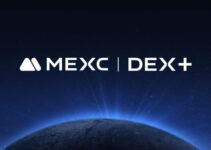Stablecoin, as the name suggests, is a stable cryptocurrency that is backed by other assets such as fiat currency, cryptocurrency, or gold. It is a product that combines decentralization with the legal fiat currency used in society. As there are minimal drastic price fluctuations, the stablecoin is more suitable as a medium of exchange.

The earliest stablecoin is USDT (Tether), which was issued by Tether in 2014, and its value is pegged to the US dollar. Tether claims that when a certain amount of USDT is issued, a corresponding amount of U.S. dollars will be deposited in its official account, that is, the issued USDT tokens will be equivalent to the amount of U.S. dollars in their bank accounts. The exchange ratio is 1:1 and users can conduct fund inquiries on the Tether platform to ensure transparency. Such a mechanism gives users full protection and security.
In addition, there are other stablecoins such as USDC and DAI that are widely used by the users, which are also anchored to the US dollar price and maintain an exchange ratio of 1:1.

Stablecoin Categories & Pros and Cons
Stablecoins are usually divided into three categories: Fiat-Collateralized, Cryptocurrency-Collateralized, and Unsecured stablecoins. Fiat-Collateralized stablecoins such as USDT and USDC are the most popular stablecoins in the market. The disadvantage of this stablecoin is that it is centralized, opaque, and has no guarantee of storing funds or redeeming tokens. Questions about the collateral have been raised (such as the safety of reserve dollars and the exact amount of reserve dollars), but the Fiat-Collateralized stablecoin has managed to prevail through the uncertainty.
Cryptocurrency-Collateralized stablecoins are similar to the Fiat-Collateralized stablecoins, with the main difference being that they are collateralized with cryptocurrencies, such as DAI. The collateral itself is a decentralized cryptocurrency, so the credit problem is solved. This approach allows users to create stablecoins by locking up collateral that exceeds the total amount of stablecoins. However, the problem also lies in the collateral – the cryptocurrency’s value fluctuates greatly and may drop in value dramatically, affecting the underlying backed value of the stablecoin.
Unsecured stablecoins are also known as algorithmic stablecoins. These stablecoins, such as UST, do not require any collateral to back them up. Its value anchoring is completely achieved through algorithms and smart contracts, which manage the supply of issued tokens and maintain stable prices by adjusting the total supply of the tokens. The downside of such stablecoins is that stability is often maintained by centralized mechanisms, or unclear and complex monetary policy. Most of the unsecured stablecoins can be highly volatile.

Why do we need stablecoins
Compared to fiat currencies, the cryptocurrency market is often volatile, and the value of tokens can be much higher or lower than when they were transferred. This makes it difficult for investors to store their digital cash. Stablecoins can solve this problem. The value of stablecoin is closely related to the underlying asset or fiat currency, which can provide stable valuations. Stablecoins can also maintain their stability through various mechanisms. As such, stablecoins can be considered as a trusted asset in volatile markets.
Should we invest in stablecoins
Stablecoins provide investors with a stable and digital channel to keep their profits locked in. Stablecoins can provide liquidity. However, stablecoins are mainly used as a medium of exchange and collateral, and cannot generate a lot of returns for investors.
Closing thoughts
Despite the limitations, stablecoins are still an important part of the crypto market. Stablecoins are cryptocurrencies that are typically backed by assets. By controlling various mechanisms, stablecoins can remain pegged within a preset price range. Therefore, stablecoins not only serve as a medium of exchange, but are considered as a safe source of long-term investment. MEXC Exchange provides various channels for investors to buy and hold such stablecoins.
Disclaimer: Trading crypto involves significant risk and can result in the loss of your invested capital. The materials are not related to the provision of advice regarding investment, tax, legal, financial, accounting, consulting, or any other related services and are not recommendations to buy, sell, or hold any asset. MEXC Learn solely provides information, but not financial advice. You should ensure that you fully understand the risk involved before investing.
Join MEXC and Start Trading Today!

